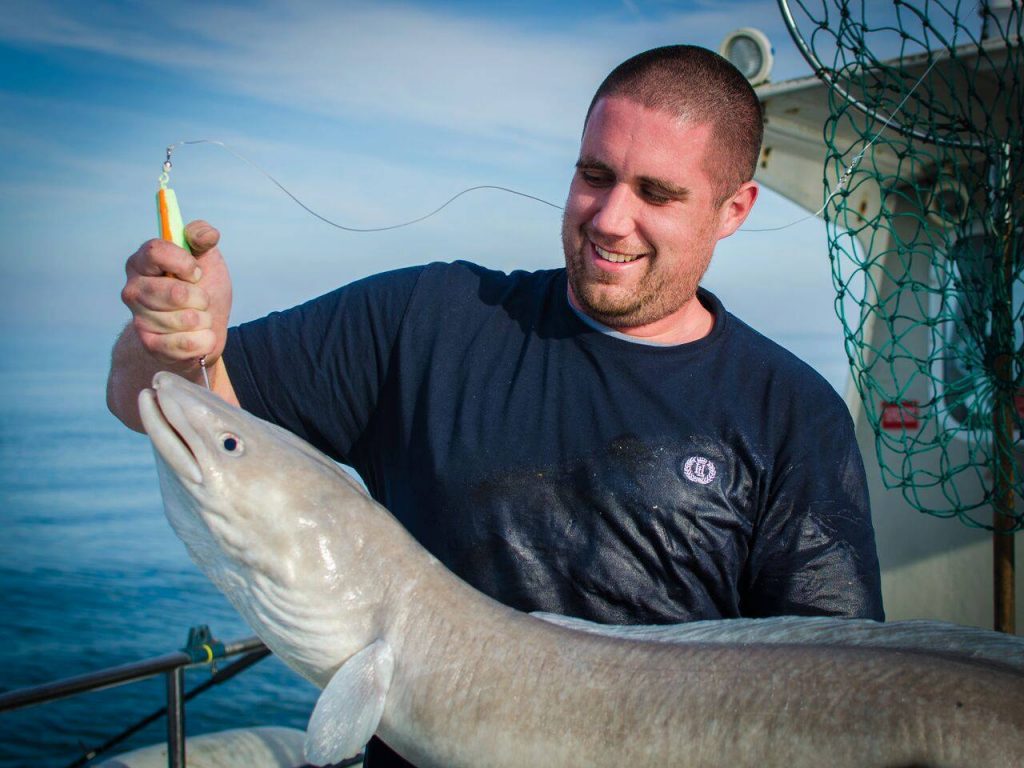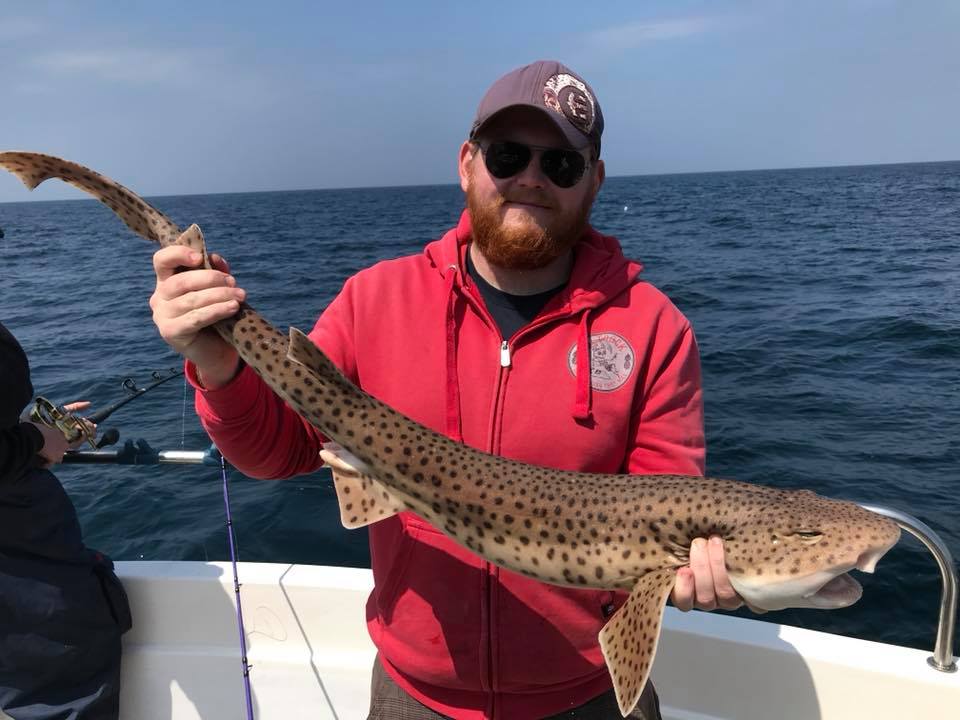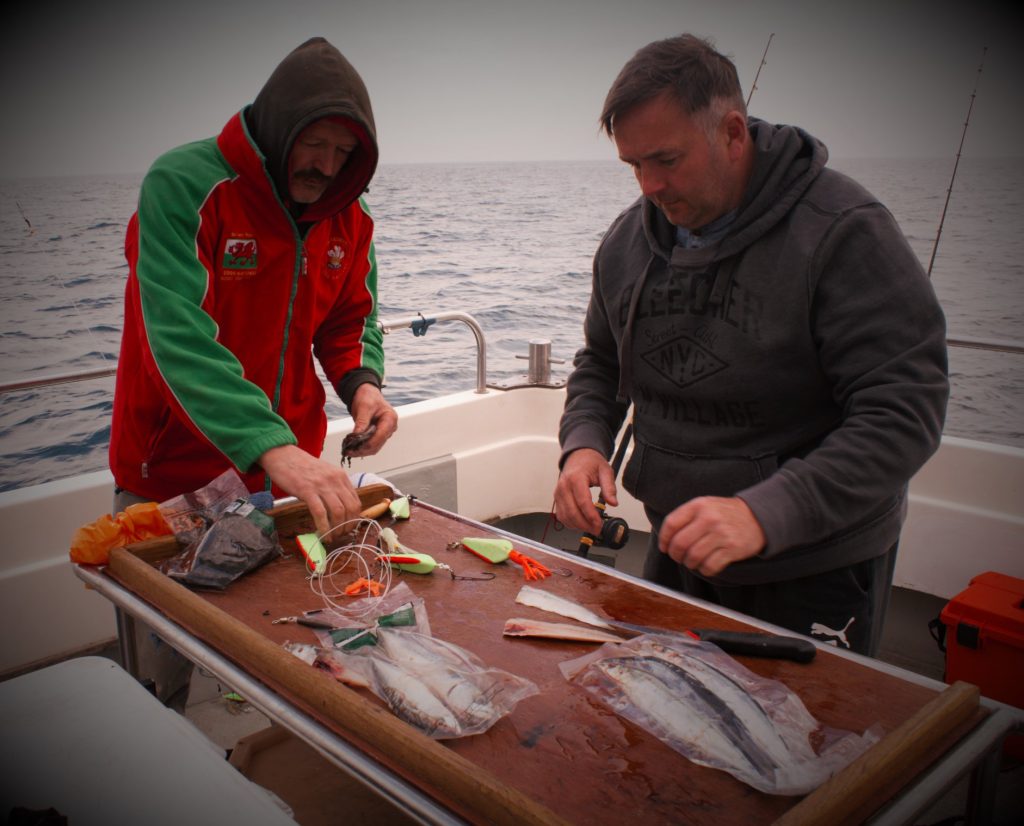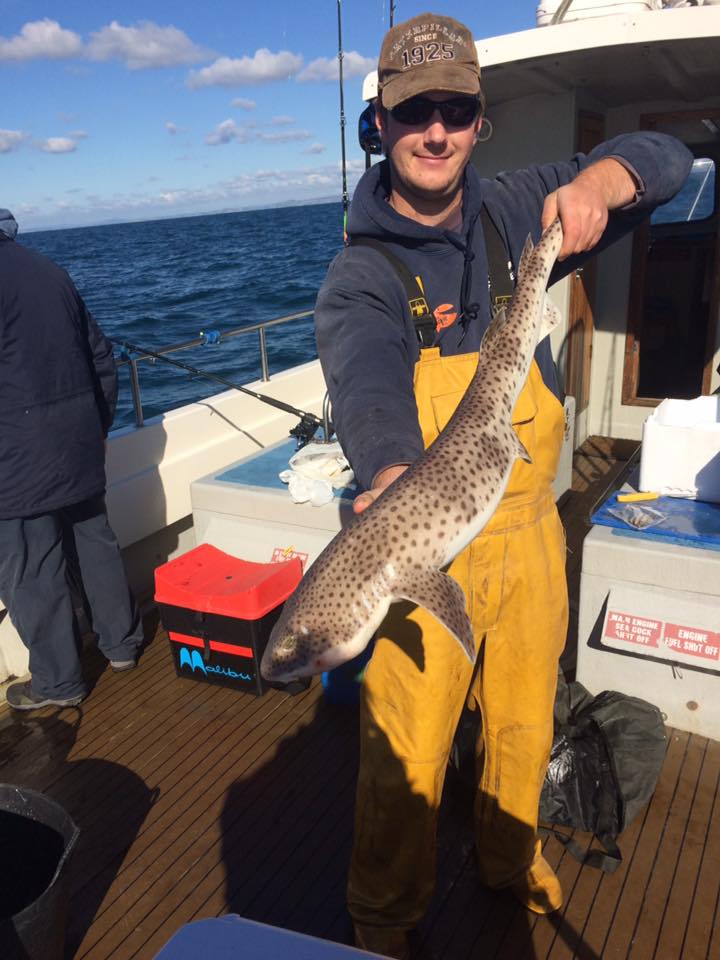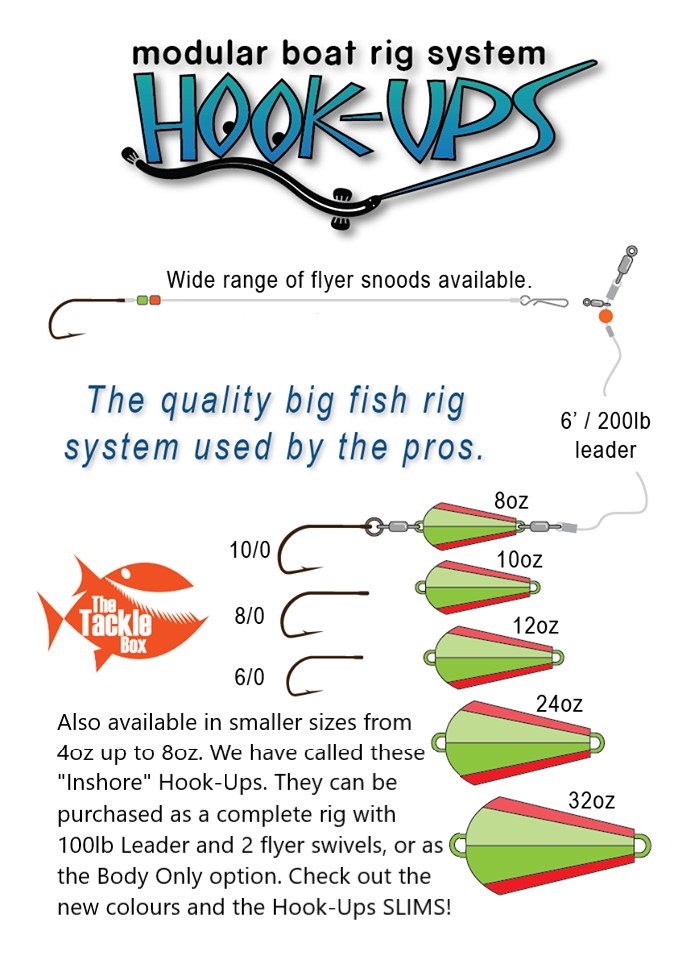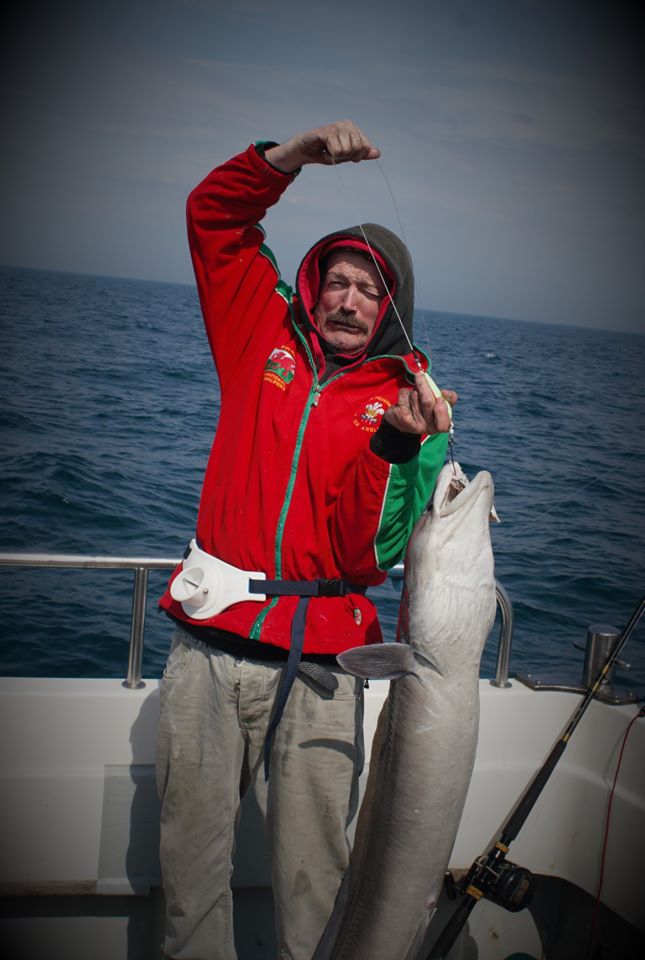About the species.
Although the larger Conger Eels tend to be found around the Wrecks it is not uncommon to find Eels up to the 40 to 50lb size on the deeper, rough, rocky ground marks. Bull Huss can be found even in shallow water, but again rockier the better! Both species have a voracious appetite and favour the bigger baits.
Baits.
Conger and Bull Huss will feed on a variety of baits including, Mackerel, Garfish, Bluey, and Squid. Through the winter months, Cuttlefish or a fillet of Whiting can be very effective for both species. In the summer a large bait of soft Spider Crab, whipped on with plenty of bait elastic can be deadly for the big Bull Huss. A live, or very fresh Poor Cod, mounted whole on the hook is also one of my go-to baits for both species. In the Summer months when mackerel are plentiful a Mackerel “flapper” (see video below) will help to pick out the larger Conger and Bull Huss.
About the Hook-Ups rig and how to use it.
The Hook-Ups rigs were designed originally for Conger fishing. The idea came from one of the Irish boat team members that I fished a Conger competition with some years back. In Ireland it is common place to fish for conger using a baited Pirk. On this particular competition, run by Pegasus Charters out of Lyme Regis, there are prizes over the 3 days for most number of Congers caught by a single angler each day, and also the biggest Conger over the whole comp. We were fairly even on the number of Eels we were catching, that was until they really came on the feed a few hours into the comp. This is when it became apparent just how much better the baited Pirk was working compared to my Running ledger rig. It had got to the stage where the Eels were feeding that well, that it was more about who could get baited up the quickest and get the bait back down to the wreck. I was having problems with the running ledger rig, even my 400lb mono hook snoods were becoming worn, so I had to change these a couple of times, a few of the Eels had swallowed the hook down, so rather than risk damaging the fish any more , my hooks were cut off. With the unhooking, I had to get the fish close enough to the boat so that i could hold onto the weight while the skipper unhooked the fish. Then there was the baiting up. Each time I caught a fish I had to spend vital seconds re-baiting. Roy on the other hand, with his baited pirk, was having non of these problems. As soon as his bait hit the seabed he had a few seconds to bait up a second pirk, ready to clip on. All of his Eels were coming up hooked in the lip, and because there was no weight swinging around, the skipper could grab the leader, hold onto the pirk, and unhook the fish with ease, every time! Many of these times his bait was still intact, so he just dropped straight back down. Roy was now catching 2 Eels to my 1, and there was nothing I could do. This competition is brutal on your arms and back, with over 300 Congers caught over the 3 days on the boat between 8 anglers. Last years comp saw 218 Eels caught Just on the last day!
I needed to do something with my Conger rigs for the following year. I first looked at buying some Pirks, changing the Split rings to stronger ones, and putting on some better single hooks. Now I did notice Roy lost 3 or 4 Pirks in the wreck, and with a couple spare to have baited up in my bucket, I would need 6 or 7. This is where it was getting expensive….. the pirks had to be heavy enough to get down to the wreck, without dragging in the tide so much, that i would be tangling with everyone else on the boat. I also needed super strong split rings and decent hooks. Each Pirk cost me around £12. I then went on to make my own, firstly to cut the cost! Discovering that making them glow in the dark also made a difference and seemed to attract more Eels. Having them in a few different sizes was also important, so I could change up or down with the tide. The Hook-Up was born!
It soon became apparent that the rig works really well for other species and not just Conger. It is also deadly for Bull Huss, and one of the main advantages over the running ledger rig I would normally use to target them, was that it was much easier to set the hook! Quite often with Bull Huss, they will mouth the bait and take their time to actually eat it. There is nothing more frustrating than getting a good size Bull Huss to the side of the boat, just for it to open it’s mouth, spit out the bait and hook, and then swim away. The Hook-Ups rig almost completely eliminates this issue!
If targeting just Conger or Bull Huss, I will fish using just the Hook-Up body and single hook, with a 6ft leader of 200lb breaking strain 10X mono. This way if you do happen to hook into a big Conger the skipper of the boat hasn’t got to worry about other hooks and snoods flying around when he is trying to grab the leader to unhook the fish. In most species competitions both Conger and Huss are an important target. They tend to always score the higher points. On many occasions I have been mid table on the scoreboard until we anchor some rough ground, and while other anglers often target the wrasse, pollack and other smaller species, I have gone on to win the comp, just by catching my full quota of Conger and Huss. In the competition scenario I will fish 1 or 2 flyer snoods (depending on the comp rules) with smaller hooks, above the Hook-Ups body, that way I can still target the smaller species. I have also started to change my hooks when targeting Bull Huss, and have opted for the Chinu pattern in the Berkley fusion range. These hooks are razor sharp, have a large enough eye for the spilt rings, and are strong enough to handle any Bull Huss.

